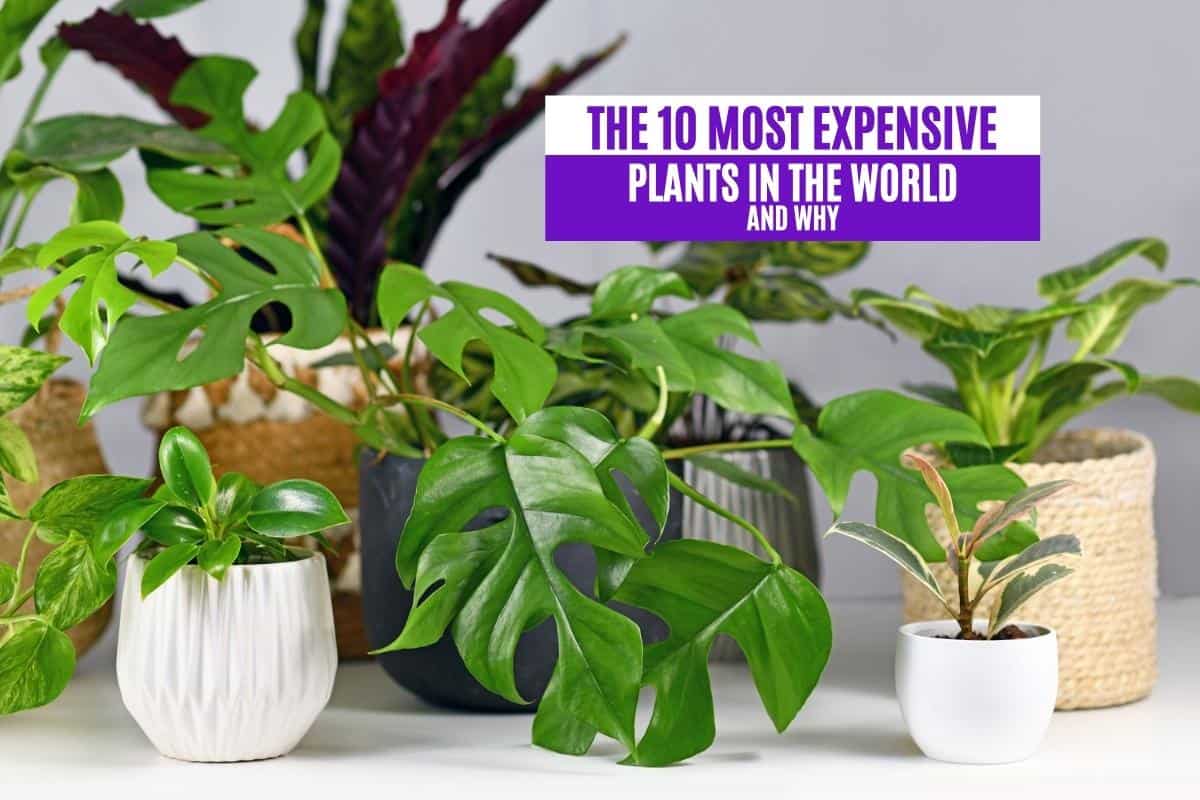When the pandemic hit, 55% of American adults turned to gardening and lawn care to occupy their time. This green interest also carried over indoors, with many homeowners picking up houseplants left, right, and center.
While the majority of plants are cheap and affordable, there are some that cost upwards of 3 figures, sometimes even more. So if you’re a plant collector, purchasing these rare and expensive plants can be a fantastic way to show off. At the very least, learning about them can give you a newfound appreciation for these exotic beauties.
Here are the 10 most expensive plants in the world and why they have such hefty price tags.
10. Fiddle Leaf Fig
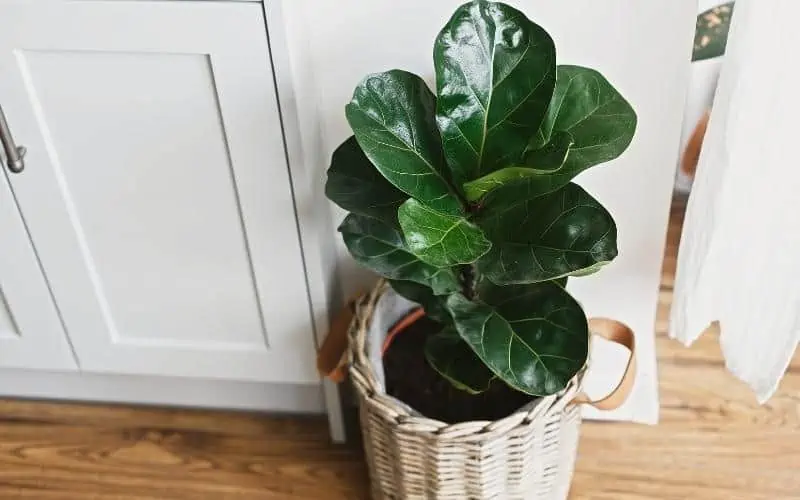
If you’re familiar with the plant world, you might be surprised to find the fiddle leaf fig on this list. After all, it’s a common house plant that you see in many households. It’s true that small fiddle leaf figs cost $20 to $50. But large mature plants can sell for up to $400.
Why It’s Expensive
Fiddle leaf figs are notorious for being fickle. Experienced plant owners will tell you that once you’ve put a fiddle leaf fig somewhere, plan on it staying there forever. Otherwise, if you try to move it, it’ll probably die.
These plants are capable of growing up to 10 feet indoors, and because they’re so fickle, it takes a lot of time and effort to grow a mature plant. When you fork over $400 for a large fiddle leaf fig, you’re paying for an established plant that won’t die as easily.
9. Variegated Hoya Carnosa Compacta
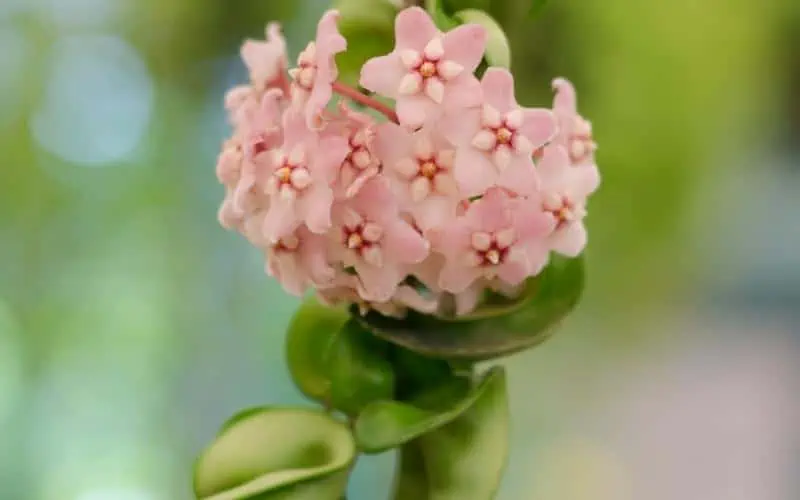
Hoya carnosa compacta is also known as “Hindu Rope”. Normal Hoya carnosa compacta plants already look spectacular because as its name indicates, it’s got a coiled trailing look.
While normal Hindu Rope plants don’t cost much, the variegated version costs a pretty penny. These have a creamy yellow coloration in addition to the regular green. A small cutting that’s about 6 inches long can set you back around $50, which means older, more established plants cost over $100.
The most anyone’s paid for a variegated Hoya carnosa compacta is $6,500 back in 2020 on New Zealand’s trading website called “Trade Me”.
Why It’s Expensive
Any variegated plant will cost more than its normal counterpart. This is because the variegation is usually unstable, so you never know what you’re going to get with the next leaf.
In fact, leaves devoid of green are beautiful but lack chlorophyll, which means it’s near impossible to get nutrition. As a result, these leaves usually die off.
The Hoya carnosa compacta plant is somewhat rare and it’s very picky when it comes to growing conditions. It’s also slow to grow; it can take up to 3 years to become an established plant.
8. Monstera Thai Constellation
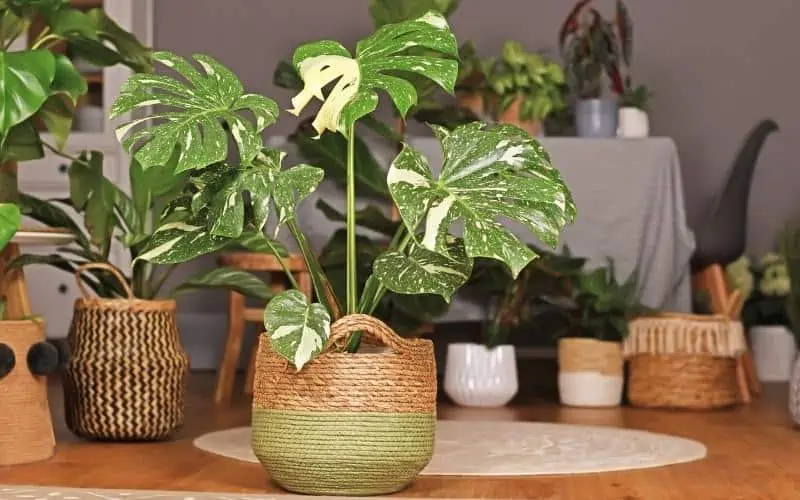
Chances are, you’ve seen Monstera deliciosa plants in stores. Also known as “Swiss cheese plants”, these have large fenestrated leaves that give a tropical vibe to any room.
The Monstera Thai Constellation has a variegated look, there are random patches of different colors. More specifically, it looks like it’s got splashes of white paint across its leaves.
This plant costs between $300 to $500, depending on how variegated its leaves are and how mature the plant is. A large plant with decent variegation can even sell for 4 figures sometimes.
Why It’s Expensive
Monstera Thai Constellation plants are the result of random genetic mutations on normal Monstera deliciosa plants. This means you’ve got to grow a good number of these plants before you encounter a mutation, and that’s if you’re lucky.
In addition, influencers have made this plant extremely popular online, so everyone wants to get their hands on one.
Costa Farms (a wholesale grower) has said they’ll release Monstera Thai Constellation plants in 2023, which means prices will drop that year.
7. Philodendron Pink Princess
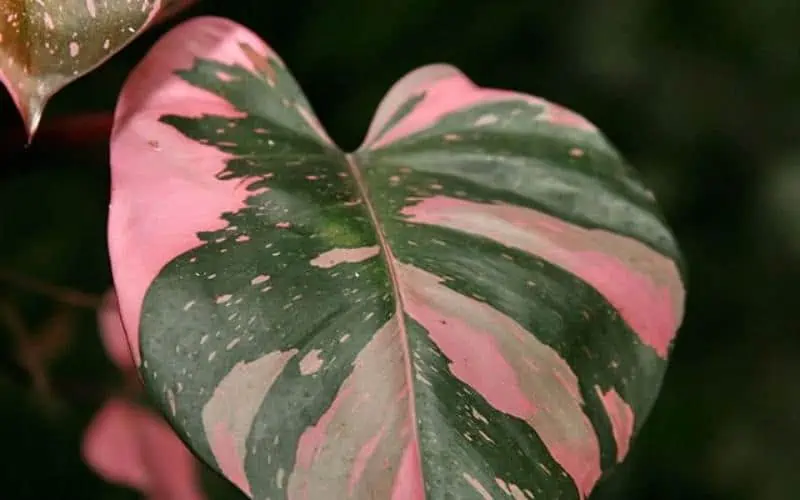
The philodendron pink princess (PPP) has stunning leaves that are variegated. As the name suggests, you’ll find pink hues on this plant, as well as shades of dark green and almost black.
While you can get a baby plant for 2 figures (prices have been dropping but you can probably get one for around $20 to $50), full-grown and fuller PPPs will cost you over $1,000. Half-moon PPPs (these are plants with leaves that are half-pink) go for even more.
Why It’s Expensive
The PPP is expensive because of its variegation. It’s also pricey because it’s a slow grower when compared to other philodendron species. Add in the fact that it was named a must-have plant of 2019 by Horticulture Week, and demand simply exceeds supplies.
The good news is, prices are starting to drop significantly. Instead of propagating normally (which is a slow process), nurseries are starting to create tissue culture PPPs, which are entire plants generated from a single cell.
When purchasing a PPP, be wary of listings for philodendron pink congos, as these are a scam. These look similar to PPPs and are attractive because they feature fully pink leaves. However, the pink leaves are chemically induced, which means the plant’s leaves will return to green after a few months.
6. Monstera Obliqua
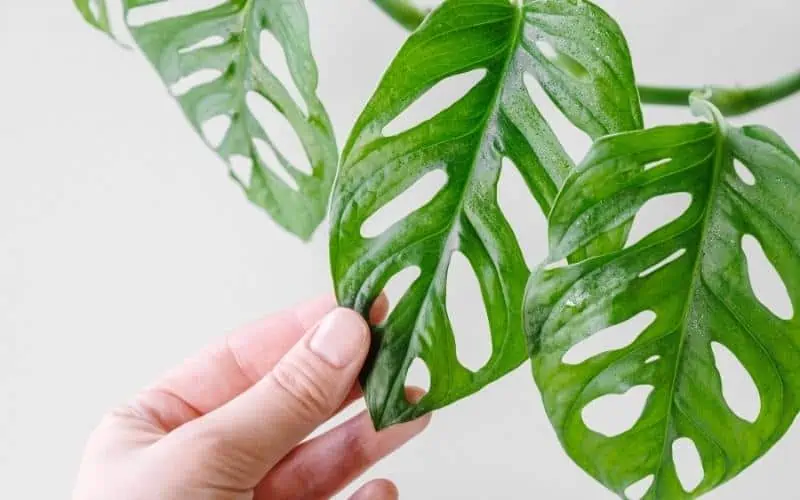
Monstera obliqua is an extraordinary plant because it’s more holes than leaves. It looks like bugs have chewed through its leaves, but the fenestration is normal; it truly lives up to its nickname of “Swiss cheese plant”.
A small Monstera obliqua can cost anywhere between a couple of hundred dollars to $1,000+. A plant lover’s paid $23,000 for a large one in an auction before.
Why It’s Expensive
This is one of the most expensive indoor plants you’ll find because they’re very rare in the wild. You’ll only find them in Central and South America, with most of these plants found in Peru. In addition, the Monstera obliqua grows slowly, so again, supplies can’t keep up with demand.
Do note that Monstera obliqua looks very similar to Monstera adansonii. Both have oval leaves that are rife with holes, but obliqua is holier. Its leaves are also more slender.
Watch out when trying to buy Monstera obliqua, as scammers will try to pass off Monstera adansonii plants as obliquas. If the price you’re seeing is too good to be true, then it’s likely that you’re not getting the plant you want.
5. Variegated Monstera Adansonii
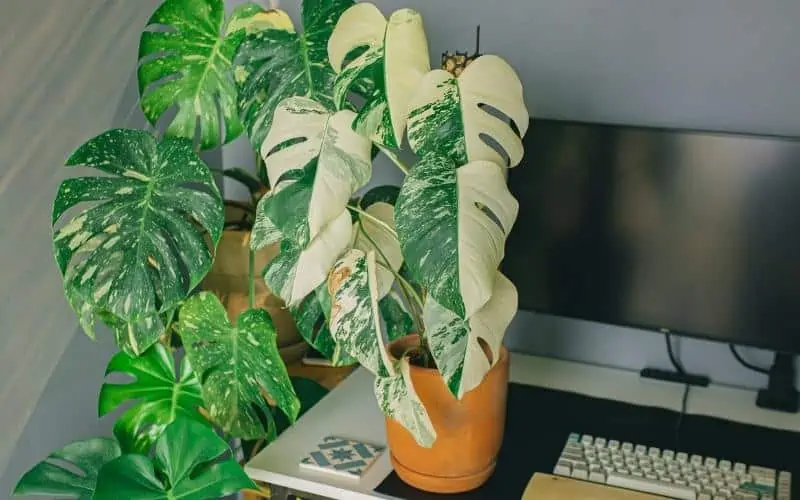
Speaking of Monstera adansonii, its variegated form is also one of the most expensive house plants you’ll see. This is a vining plant that’ll eventually grow to trail down.
Like the Monstera Thai Constellation, the variegated Monstera adansonii is sprinkled with splotches of white and yellow, and some leaves even have half-moon coloring. Depending on the size, this plant can go for over $1,000. The most anyone’s ever paid for this plant is $38,000.
Why It’s Expensive
Again, variegation is an unstable thing. Also, these plants grow slower in comparison to normal Monstera adansonii plants, so it’s tougher to stock up large supplies. Plant influencers have also played a part in hyping up this plant, so demand is high while supplies can’t keep up.
4. Variegated Philodendron Minima
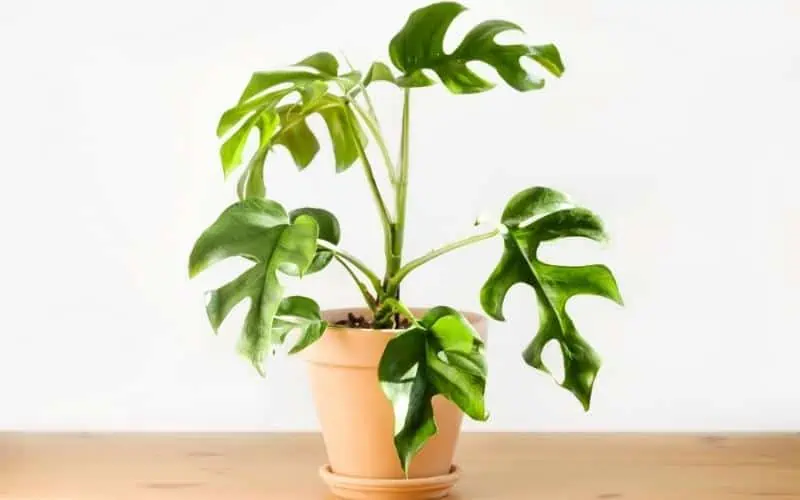
The philodendron minima isn’t actually a philodendron. Instead, it’s a Rhaphidophora tetrasperma and is also called a mini monstera.
In any case, it’s a plant that has leaves that are split into 4 large sections. The variegated form has large chunks of neon green and yellow, which give it a striking appearance.
While regular philodendron minima plants sell for around $50, the most anyone’s paid for a variegated plant is $8,150. Even small plants with only a few leaves sell for over $1,000.
Why It’s Expensive
If the stems of the leaves aren’t variegated, then the variegation is unstable. You’ll rarely find the philodendron minima growing in the wild because this plant is a result of a random mutation.
On top of that, this is a very picky plant. You need to get the growing conditions perfect for it to thrive. This means that it takes skilled growers to put out healthy plants for sale.
3. Saffron Crocus

The saffron crocus is also known as Crocus sativus or autumn crocus. Like other crocus flowers, the saffron crocus grows from a bulb and eventually creates beautiful blooms.
This is one of the most expensive plants to grow because it gives you one of the most expensive spices in the world: saffron. The bulbs themselves don’t cost much; you can buy a few for around $50.
Why It’s Expensive
You might be thinking: if saffron crocus bulbs don’t cost much, how come they’re near the top of this list?
The fact is, it takes at least 80,000 saffron crocus bulbs to produce usable saffron. This equals out to $1,500 per pound for the spice.
Not only does it take a lot of money to produce saffron spice, but it’ll also require a large investment of your time to get these bulbs to flower. And after they flower, you’ll have to collect the saffron and grind it by hand.
2. Shenzhen Nongke Orchid
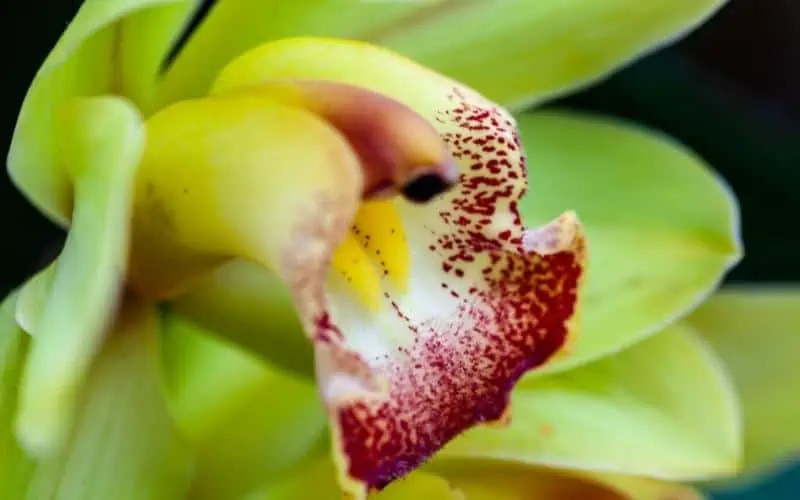
The Shenzhen Nongke orchid is the only manmade plant on this list. It’s also the most expensive flower in the world.
This flower was created in China and took 8 years to perfect. It has yellow, lime-green petals and a white interior dotted with red.
What’s unique about this orchid is it was designed to be edible. Not only that, but it tastes delicious too.
Why It’s Expensive
Not only did it take 8 years to create, but the Shenzhen Nongke orchid also only blooms every 5 years. There’s only been 1 flower old, and the lucky (and anonymous) auction winner bought it for over $200,000 back in 2005.
Needless to say, this orchid is incredibly rare and not readily available for purchase. You’ll be hard-pressed to find one for sale and even if you do, it’s probably already spoken for.
Don’t give up hope though. Orchid breeders are still perfecting their cultivation methods, which means you might see more of these special orchids on the market in the near future.
1. Old Pine Bonsai
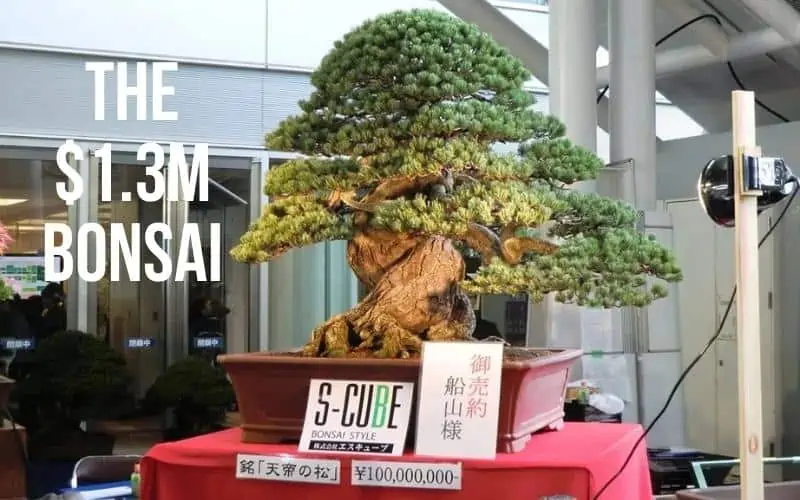
The most expensive plant in the world is the old pine bonsai. More specifically, it’s a particular bonsai that’s over 800 years old.
Back in 2011, the miniature white pine tree was sold in Japan at the 11th Asia-Pacific Bonsai and Suiseki Convention & Exhibition to the tune of 100,000,000 yen. This is the equivalent of $1.3 million.
Why It’s Expensive
If you look at any bonsai tree in stores, they’re reasonably priced at maybe $50 tops. So what makes this old pine bonsai so special?
You might’ve noticed that this particular mini white pine tree is over 800 years old. This already makes it highly desired, since it’s no easy feat keeping a living thing alive for almost a millennia.
In addition, bonsai is an art that many take seriously. Enthusiasts will judge each bonsai tree by their qualities and rank them like you would with quality leather. It takes time to carefully shape these miniature trees into highly aesthetic looks, so what you’re buying is the time and effort the tree owners have put in.
It might be tough to get your hands on this particular bonsai. But the good news is, if you don’t want to buy a cheap $50 bonsai from the local shop, there are many specialist bonsai trees that are more special and cost 4 figures.
Add the Most Expensive Plants to Your Home
With this list of the 10 most expensive plants in the world, perhaps you have a new appreciation for plant life. While some plants on this list are unique and might be impossible to get, there are still plenty of luxurious and exotic choices available for you to fill your home with.
If you’ve got a green thumb, then snatch up good deals and display these most expensive rare plants in your house. Your friends will be green with envy. And if you’re successful in propagating these plants, you just might be able to make a small profit off these plants while sharing the joy.
Looking to spend more money and see the world? Then read about the 10 most expensive train rides you can take!

